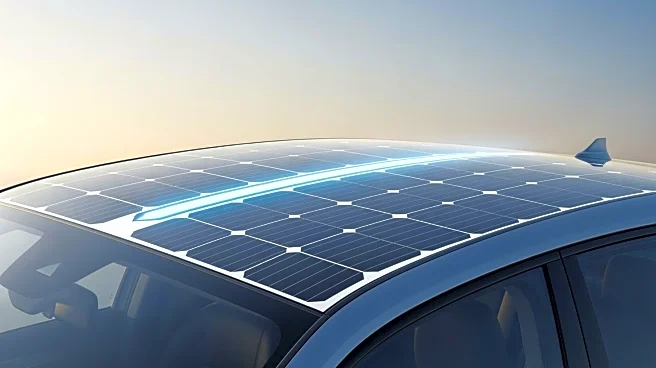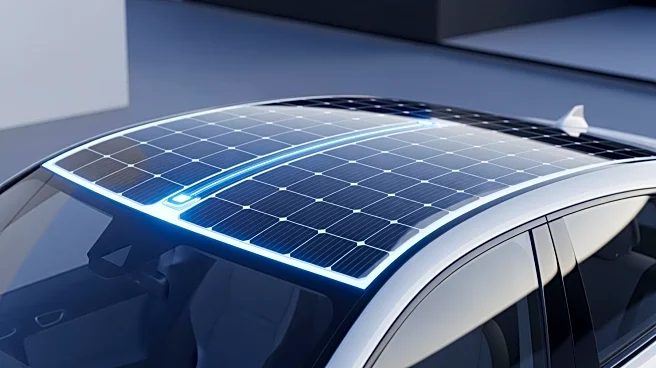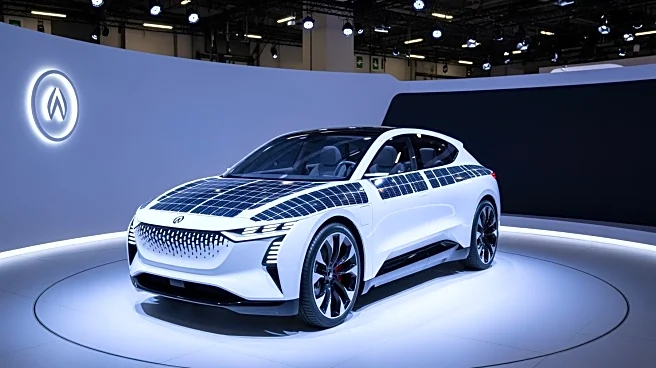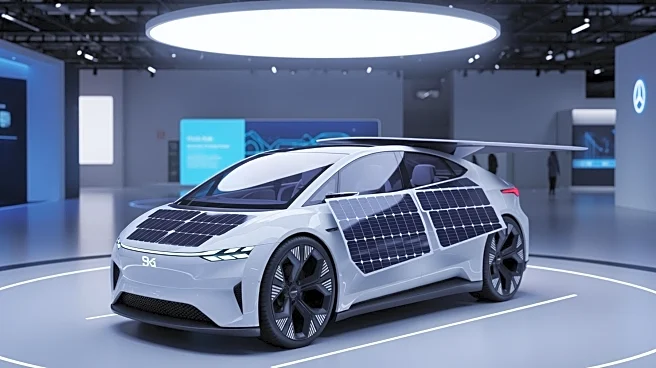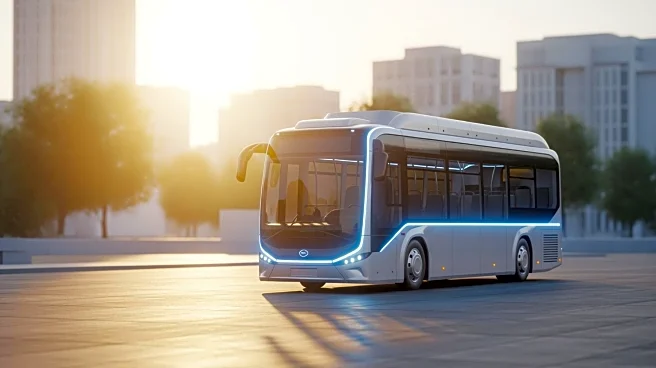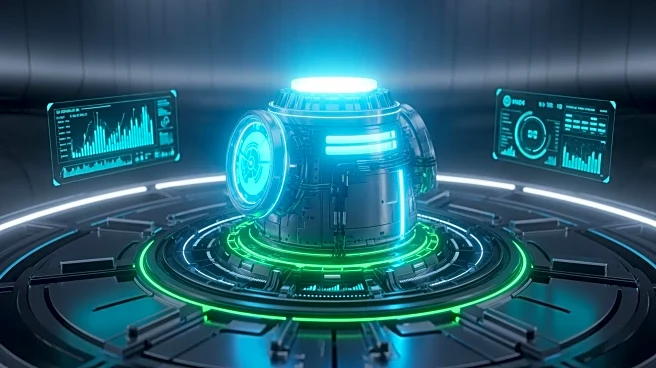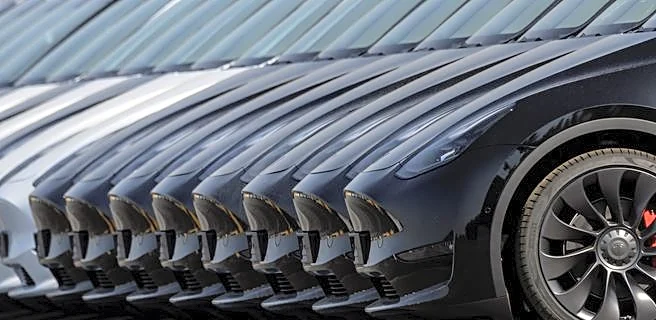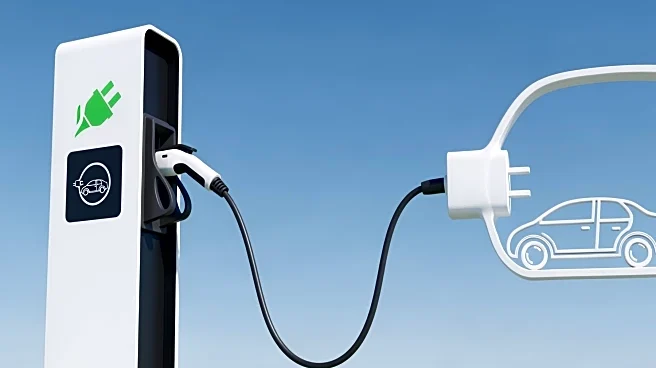What's Happening?
Nissan has introduced the Ao-Solar Extender system for its Sakura electric vehicle (EV), which is Japan's top-selling EV. This innovative system is designed to generate solar electricity sufficient to power
the vehicle for up to 3,000 kilometers annually, according to internal estimates. The system includes a fixed roof-mounted solar panel that charges the vehicle while driving and an additional panel that extends when parked, increasing the solar panel surface area and power generation potential to approximately 500 watts. This expanded panel also provides shade, reducing cabin temperature and air conditioning power consumption. The Ao-Solar Extender system originated from Nissan's internal idea contest in 2021 and is planned for future commercial launch. It aims to reduce reliance on grid-based charging and enhance EV ownership convenience.
Why It's Important?
The introduction of the Ao-Solar Extender system represents a significant advancement in sustainable automotive technology, potentially reducing the need for grid-based charging for EV owners. This innovation aligns with global efforts to promote renewable energy and reduce carbon emissions. By enhancing the convenience and efficiency of EVs, Nissan is reinforcing its leadership in environmentally conscious innovation. The system also serves as an emergency power source during disasters, adding a layer of resilience for users. This development could influence other automakers to explore similar technologies, further driving the adoption of solar-powered vehicles and contributing to the broader shift towards sustainable transportation solutions.
What's Next?
Nissan plans to showcase the Ao-Solar Extender system at the Japan Mobility Show 2025, where visitors can view the prototype within the Tokyo Future Tour City Life zone. The company has not yet announced a specific commercial launch date for the system, but it is expected to be integrated into future models. As the technology progresses, Nissan may expand its application to other vehicle models, potentially influencing industry standards for solar-powered EVs. Stakeholders, including consumers and environmental groups, will likely monitor the system's performance and impact on reducing carbon footprints.
Beyond the Headlines
The Ao-Solar Extender system highlights the growing trend of integrating renewable energy solutions into everyday technology, reflecting a cultural shift towards sustainability. This innovation not only addresses environmental concerns but also enhances the practicality and appeal of EVs, potentially accelerating their adoption. The system's ability to provide emergency power during disasters underscores the importance of resilient infrastructure in the face of climate change and natural disasters. As automakers continue to innovate, the integration of solar technology into vehicles may become a standard feature, influencing consumer expectations and industry practices.
